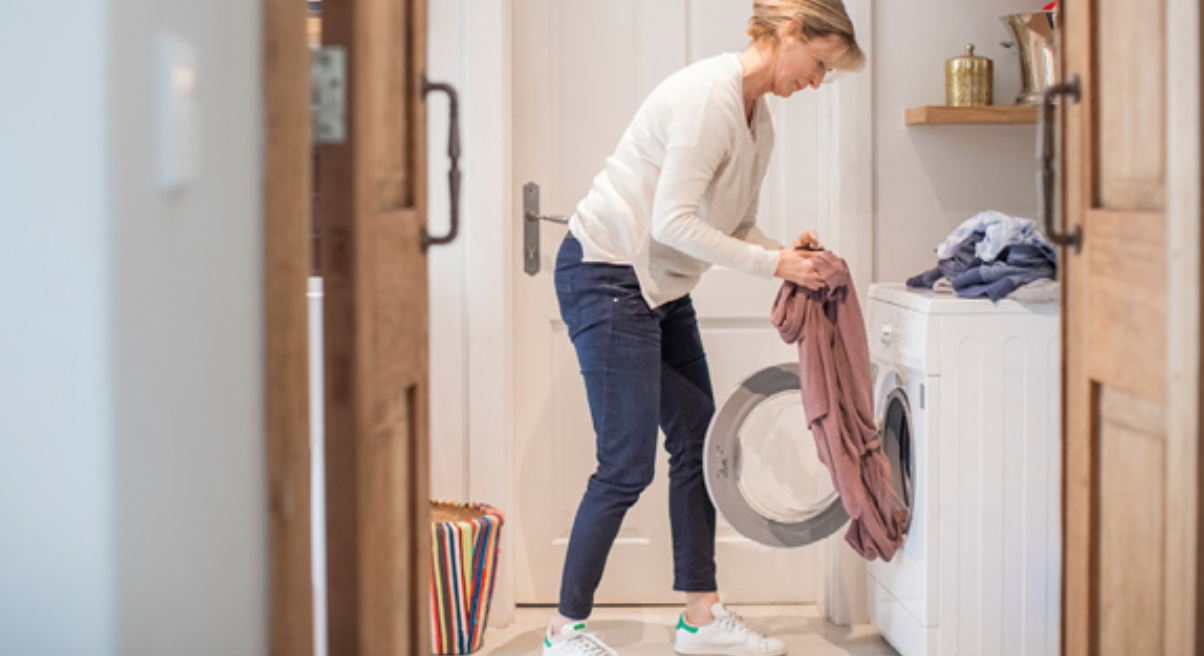 Even if you’re in a self-quarantine to keep yourself and others safe, how do you keep the coronavirus from getting inside your home? Is there a chance that your clothes and your shoes may bring the virus inside?
Even if you’re in a self-quarantine to keep yourself and others safe, how do you keep the coronavirus from getting inside your home? Is there a chance that your clothes and your shoes may bring the virus inside?
Here’s what we know about the transmission of the coronavirus through common articles of clothing.
If you are out for a run in your neighborhood or making a quick visit to the grocery store, it is highly unlikely that you would contract COVID-19 via your clothes or shoes.
At this point, there have been no documented cases of transmission of the novel coronavirus via clothing and shoes.
Coronavirus is spread by respiratory droplets. Coughing and sneezing by an infected individual in close proximity to another person are the most likely means of direct transmission.
However, we do know that the virus is capable of surviving outside the human body on different surfaces, which can result in transmission if touched.
Depending on the type of surface, experts estimate that the virus can survive for just a few hours up to a few days.
While metal and plastic can provide a haven for the virus for up to 2 to 3 days, clothing is not considered a material conducive to its survival.
Humidity and moisture play a significant environmental role in whether or not a virus can thrive. The nature of most cloth materials is not conducive to this. Clothing is usually more of a mesh than a hard surface, which could potentially aerate the environment more readily.
Even though transfer of the virus via clothing is unlikely, experts agreed that there are a few scenarios in which immediate laundering is a good idea.
If you are taking care of or frequently in close proximity to an individual with COVID-19, doing laundry often is an essential part of preventive hygiene. This includes, in particular, high risk individuals such as healthcare workers.
The average trip to the grocery store shouldn’t necessitate doing the laundry as soon as you get home. However, if you haven’t been able to keep a safe social distance from others or, even worse, someone has coughed or sneezed in your direct vicinity, washing those clothes would be a good idea.
But, in general, focusing on other areas of hygiene such as keeping hands clean and not touching your face is more important than laundering clothes.
We do know that social distancing is our most effective means of controlling transmission. So going to the grocery store obviously is a break in our usual patterns of social distancing. To take extra precautions you would certainly use hand hygiene going in as well as going out and management of anything that could potentially have been touched or handled by other persons. Any hygiene you can add to that practice is additive.
When doing laundry at home, killing the virus shouldn’t take any additional effort. Most household detergents are sufficient.
For a more in-depth look, the EPA offers a full list of products known to be effective against SARS-CoV-2.
Shoes tend to be a lot dirtier than clothing. As such, they’re more likely to carry bacteria and other contaminants into the home.
A new study published by the Centers for Disease Control and Prevention (CDC) suggests that the coronavirus can live on the soles of shoes.
In the study, researchers took samples from the soles of shoes worn by members of the medical staff in the intensive care unit at a hospital in Wuhan, China. They found that half the samples tested positive for SARS-CoV-2, the virus strain that causes COVID-19.
These findings have led researchers to suggest that the soles of medical staff shoes might function as carriers of the disease.
Nonetheless, experts agree that shoes are an unlikely source of transmission of the novel coronavirus in most cases. And that’s because we already treat shoes how they should be treated.
What we usually do with shoes is already protective. We don’t put our shoes on the kitchen table. We don’t put shoes in our mouths. They aren’t high touch areas. So, our daily patterns already reflect our management of shoes as dirty objects.
But you can take additional safety measures to ensure that contaminants don’t enter your home by cleaning off your shoes and either leaving them at the door or designating an area safely away from social areas of your home in which to leave shoes and other outerwear.
Taking off your shoes and cleaning them before you enter your home (and leaving them in your garage, washroom, or porch) would also be advisable. This will prevent you from introducing virus into your home from a simple trip to the grocery store. Just make sure you clean them outside your home or apartment, and let them dry naturally.
While concern has grown in recent weeks about the potential for different objects to transmit the virus, the simple fact is that direct transmission from person to person is still believed to be the primary form of exposure.
The bottom line is this: It’s person to person transmission, not clothing to person, or shoe to person transmission in any significant way.

